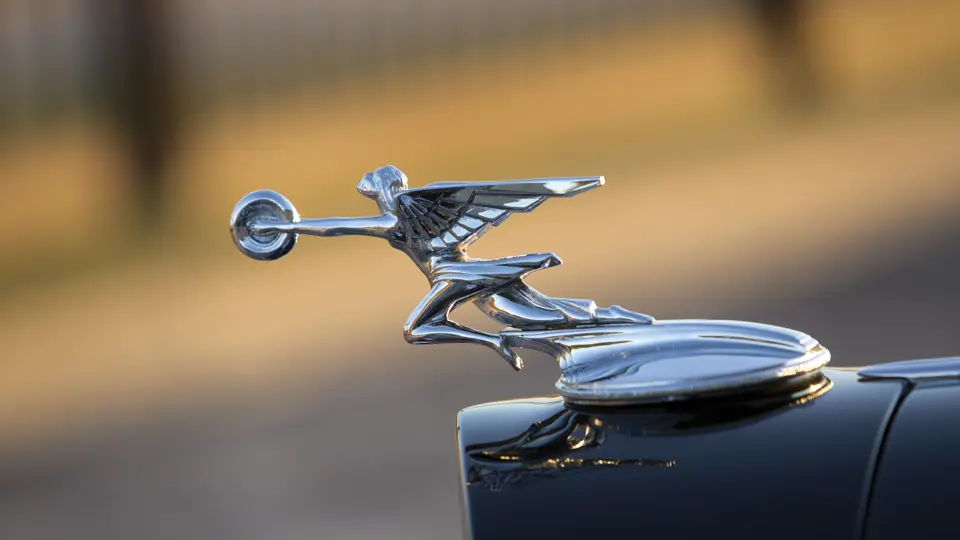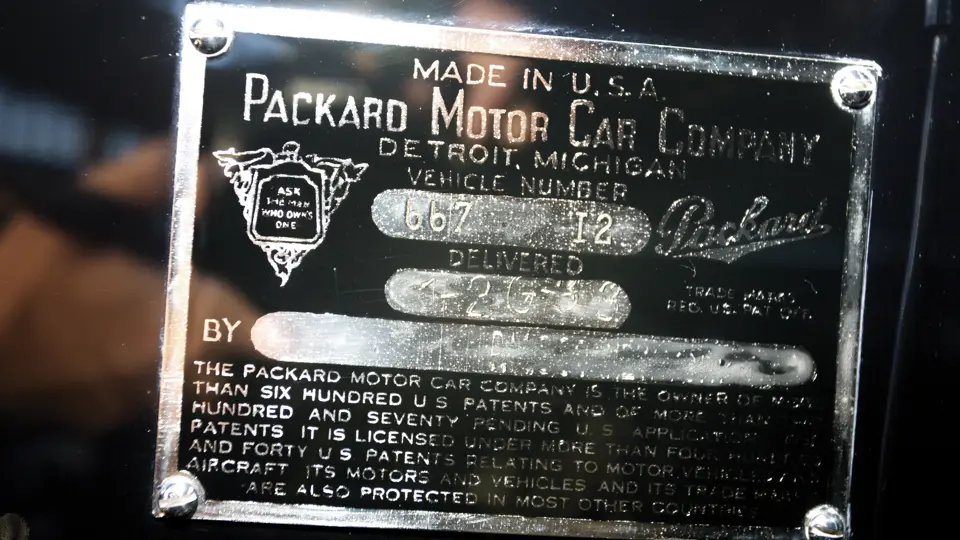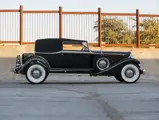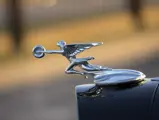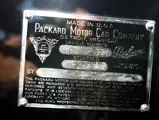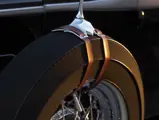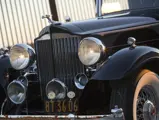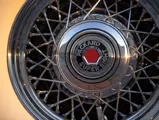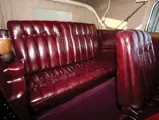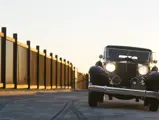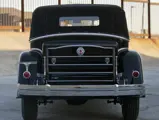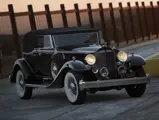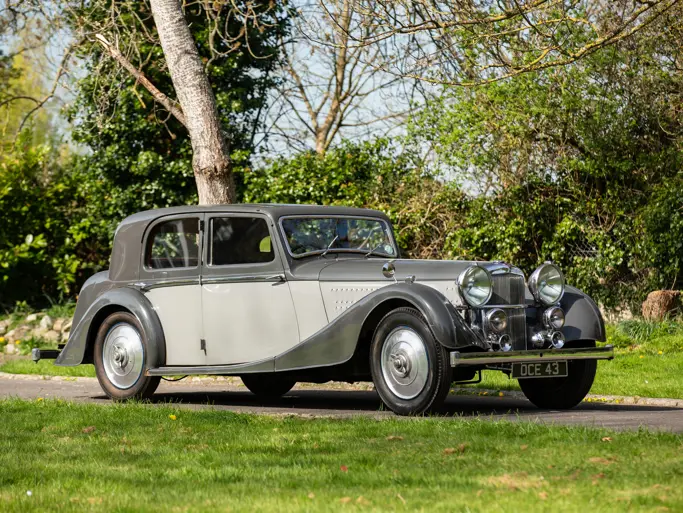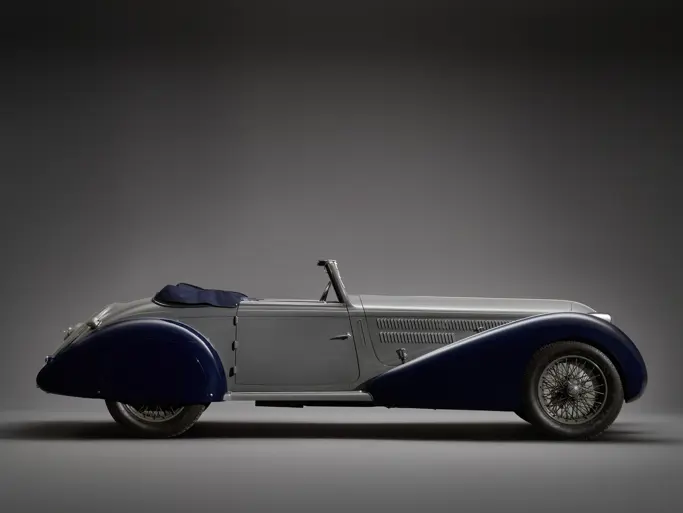Model 1004. 150 bhp, 327 cu. in. side-valve inline eight-cylinder engine, three-speed synchromesh manual transmission, solid front and live rear axles with semi-elliptic leaf springs, and driver-adjustable vacuum-assisted four-wheel mechanically actuated drum brakes. Wheelbase: 142.5 in.
• Pebble Beach Best in Class winner
• Beautifully restored in elegant colors
• Desirable, two-door, open, 10th series Packard
The cars referred to as 1933 Packards were, in fact, what Packard called 10th series cars. Packard had steadfastly refused to adopt the convention of the model year system, which called for new cars to be introduced in September or October to coincide with the auto show schedules, refusing to have the company’s timeline dictated by others.
With the introduction of the 11th series cars, Packard finally decided the benefits outweighed any other factors and reluctantly joined the other manufacturers. The result was a shortened run for the 10th series cars—just seven months—to make way for a fall introduction of the new models. For this reason, the 10th series cars are much rarer and, as a result, are preferred by many collectors.
In addition to the changes noted earlier, the 10th series cars offered a number of updates, including the new X-braced frames, downdraft carburetion, and dual coil ignition. Styling was also updated with smart, new skirted fenders and a V-shaped radiator shell. Inside, a new aircraft inspired dash and upgraded trim were added.
As was the case in the ninth series cars, three chassis were offered: the Eight, the Super Eight, and the Twelve—it are the Super Eight and Twelve that are most sought after by collectors today. Both feature the longer 142-inch wheelbase, with its nearly six inch longer hood, and the longer and more graceful flowing fenders. Many consider an open 1933 or 1934 Packard to represent the ultimate Classic Era collector car, with their beautiful front end ensemble featuring matching V-shaped radiators, headlights, and fender lights.
The 1004 Super Eight Convertible Victoria offered here has benefited from a three-year body-off restoration to the highest possible standards, which was completed in the summer of 1999, at a cost of more than $400,000. The quality of the restoration is attested to by a most impressive string of wins on the show circuit, starting with the 1999 Ironstone Concours, where the car was awarded Best of Show.
At the 2000 Fresno Concours, the car again won Best of Show. Incredibly, in its third showing at the 2000 Mare Island (formerly Silverado) Concours, it again won Best of Show. At the CCCA Grand Classic in 2000, the car won 1st place, as well as being awarded a perfect 100.0 points. Finally, the 2000 season ended with a class win at Pebble Beach in 2000—perhaps the most rigorous test of all.
The car entered a prominent East Coast collection in 2002 and continued to be regularly shown, earning its AACA National First Junior at the Hershey Fall Meet that year. In 2003, the car earned its CCCA Senior Award, followed by its Premier Award in 2004. Several other awards followed, including wins at Lake Mirror and Keeneland Concours. The present owner acquired the car in 2008, and it has been painstakingly maintained ever since.
A striking design, these Convertible Victorias are rarely seen; they offer the classic driver the rare combination of stylish lines with the practicality of a car with a back seat and trunk. Given its provenance and outstanding show record, it is likely that the example offered here is the finest example of its kind in the world today.
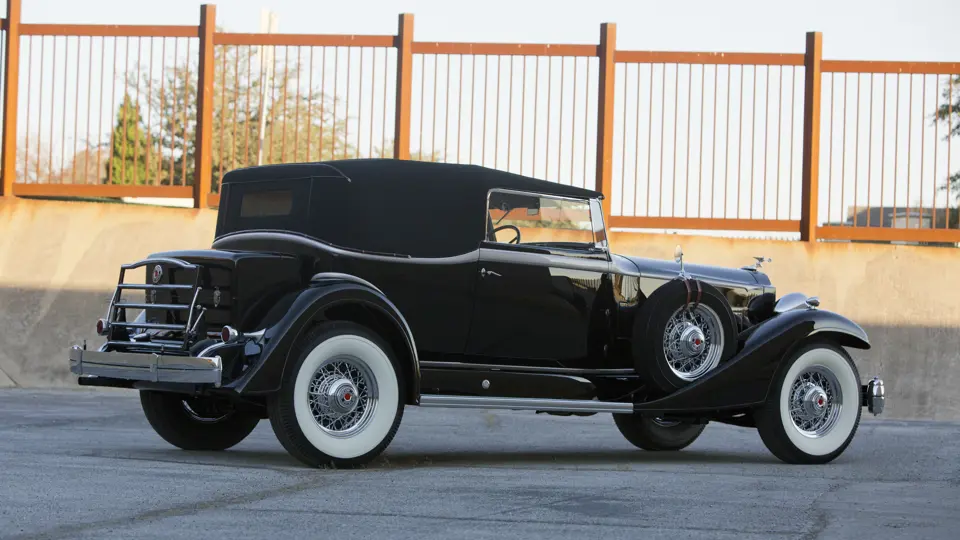
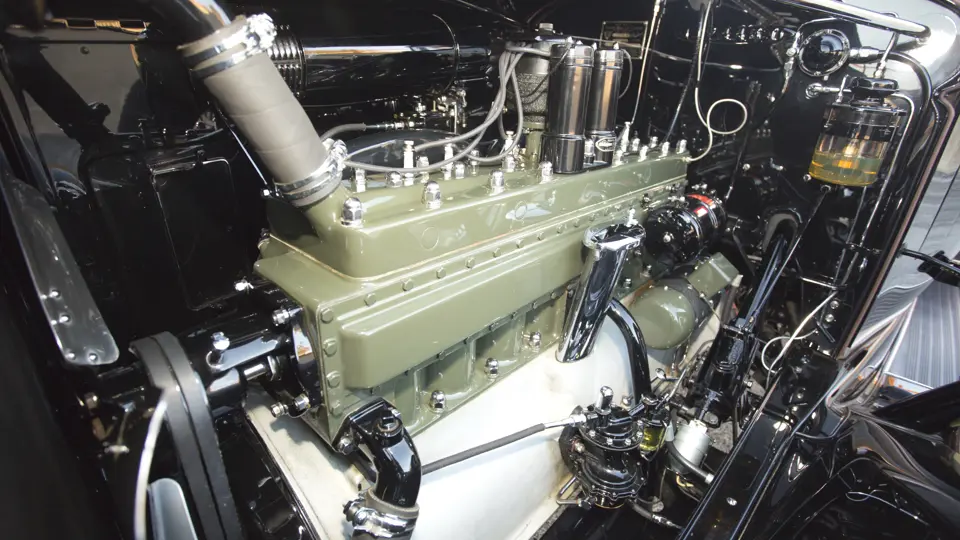



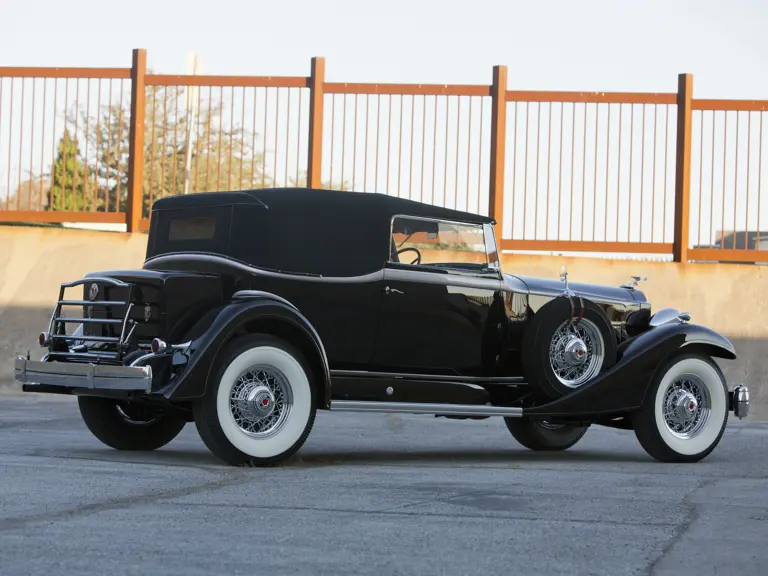
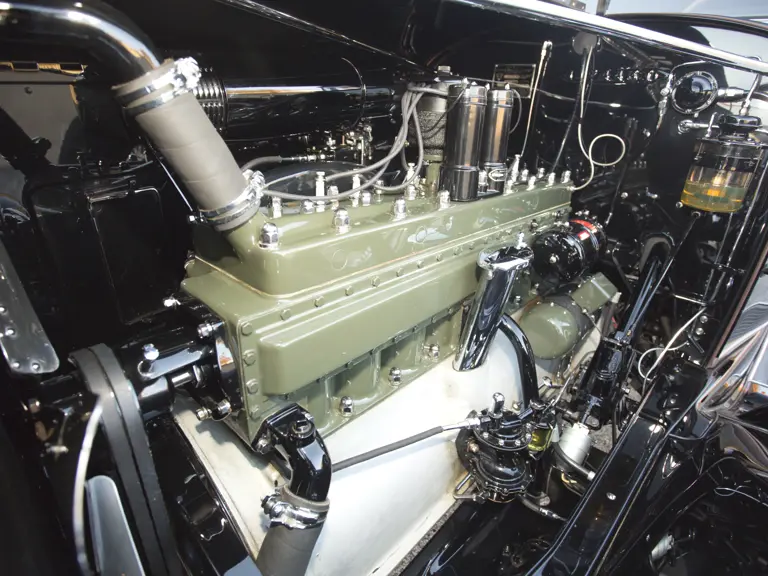
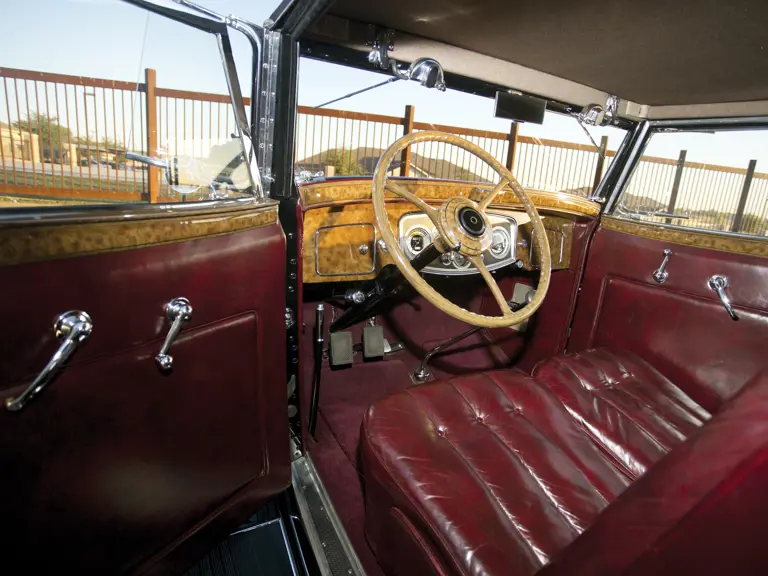
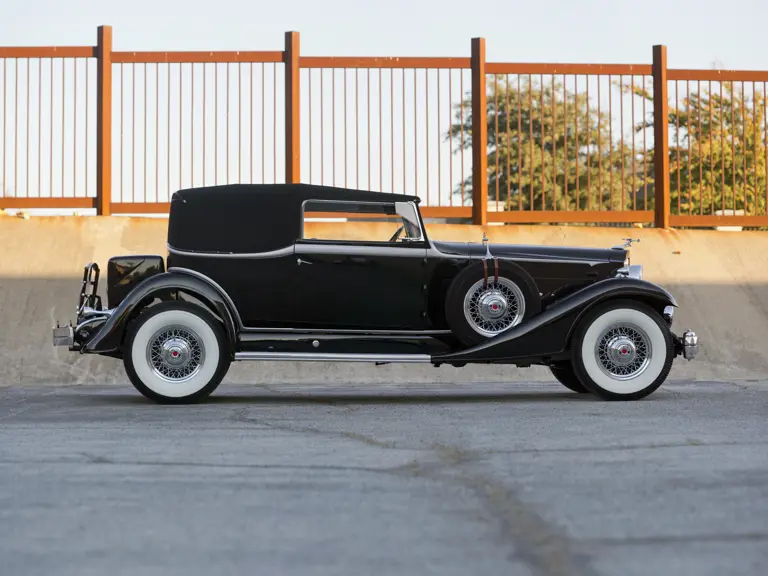
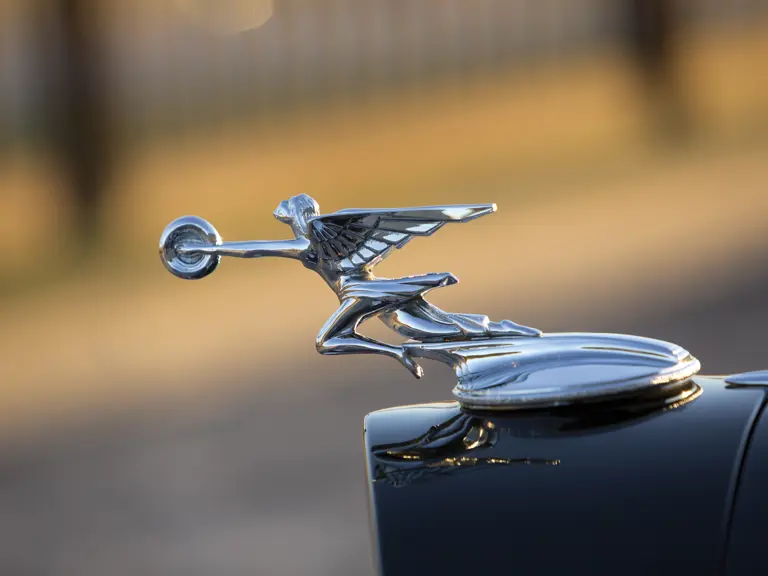
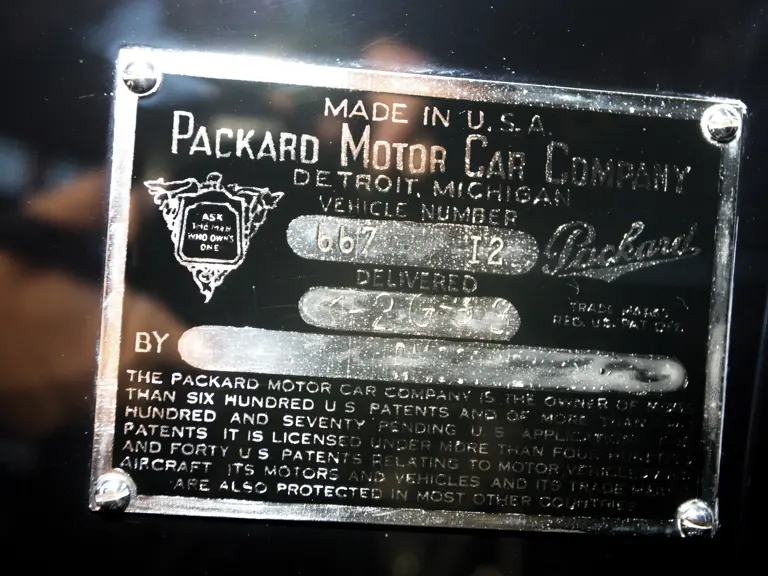

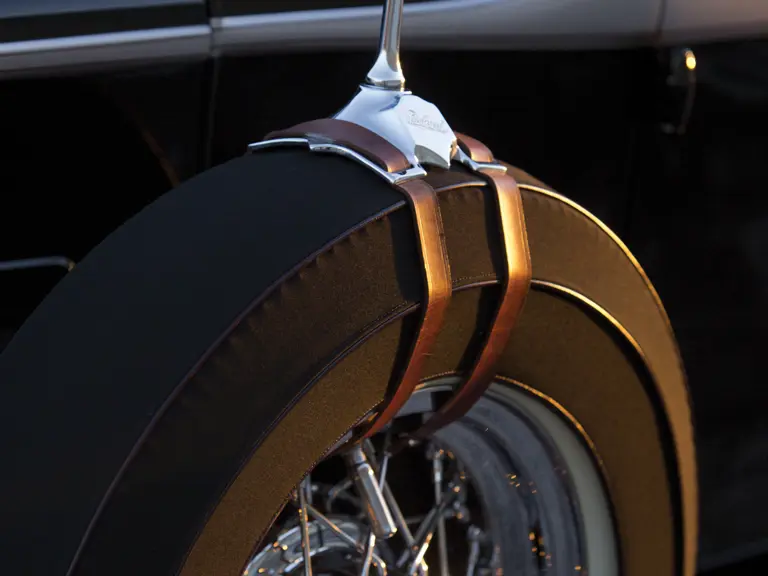

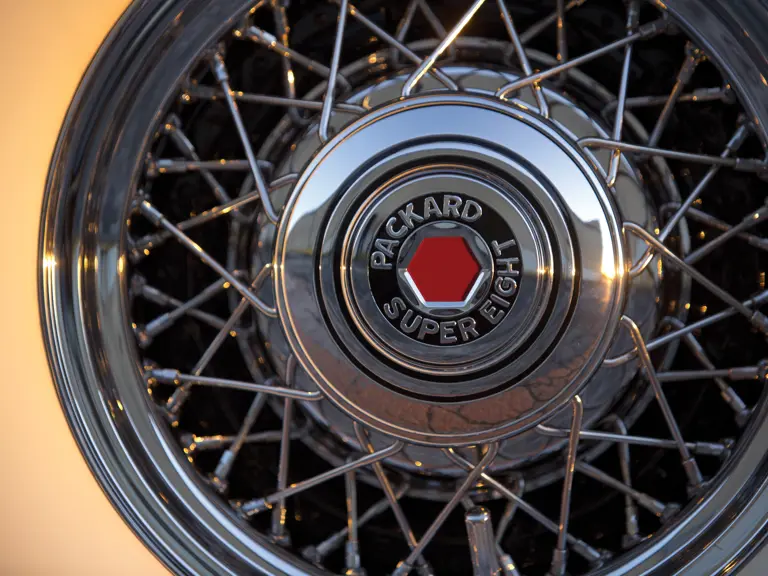
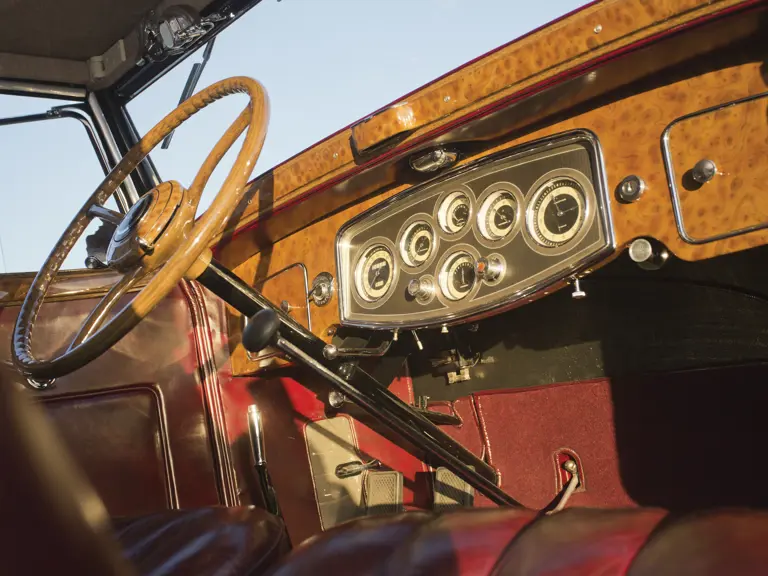
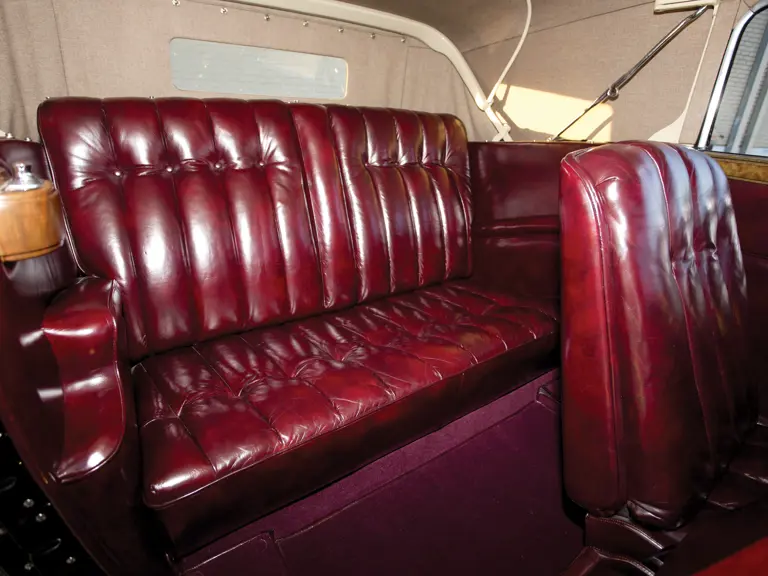
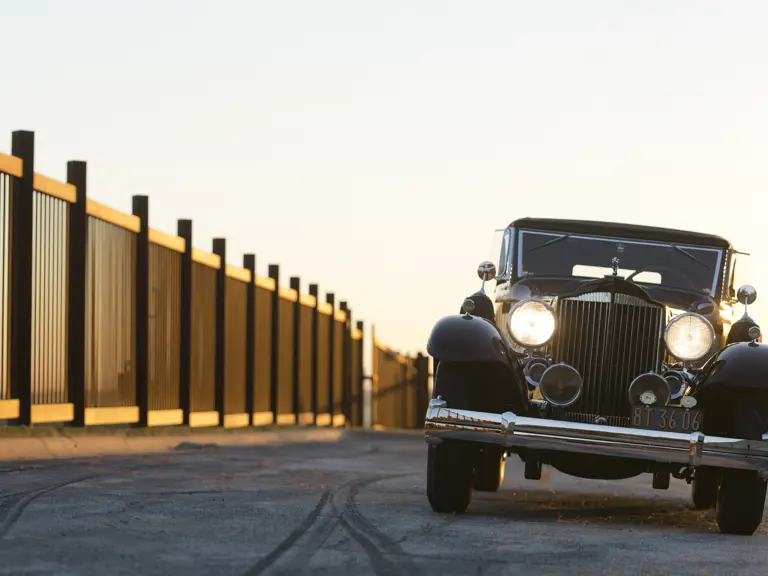
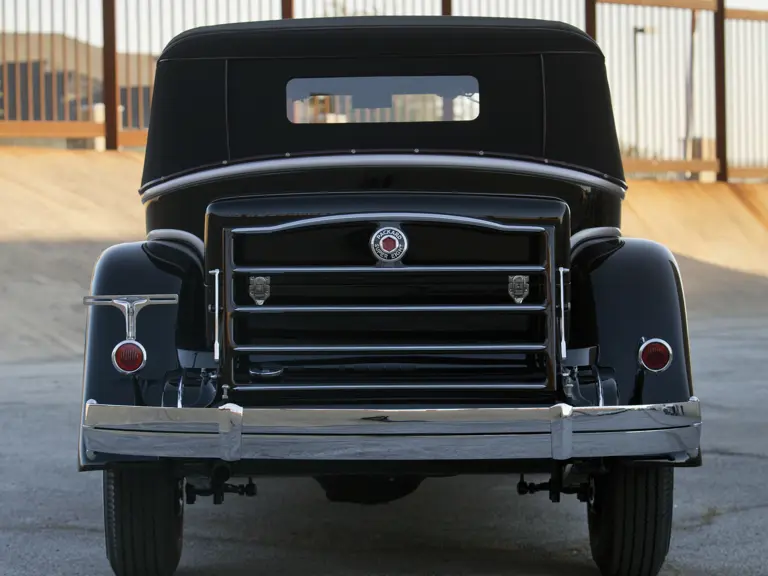

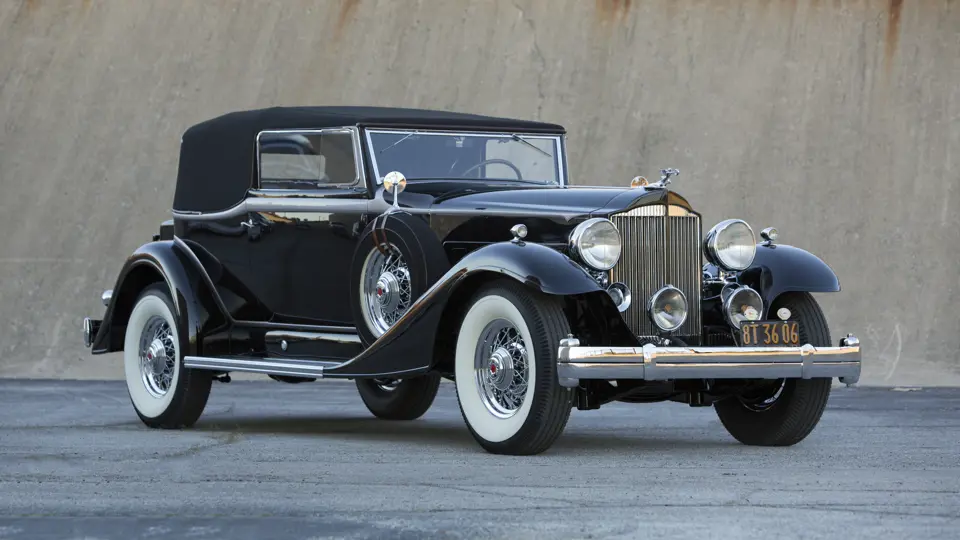
 | Phoenix, Arizona
| Phoenix, Arizona

